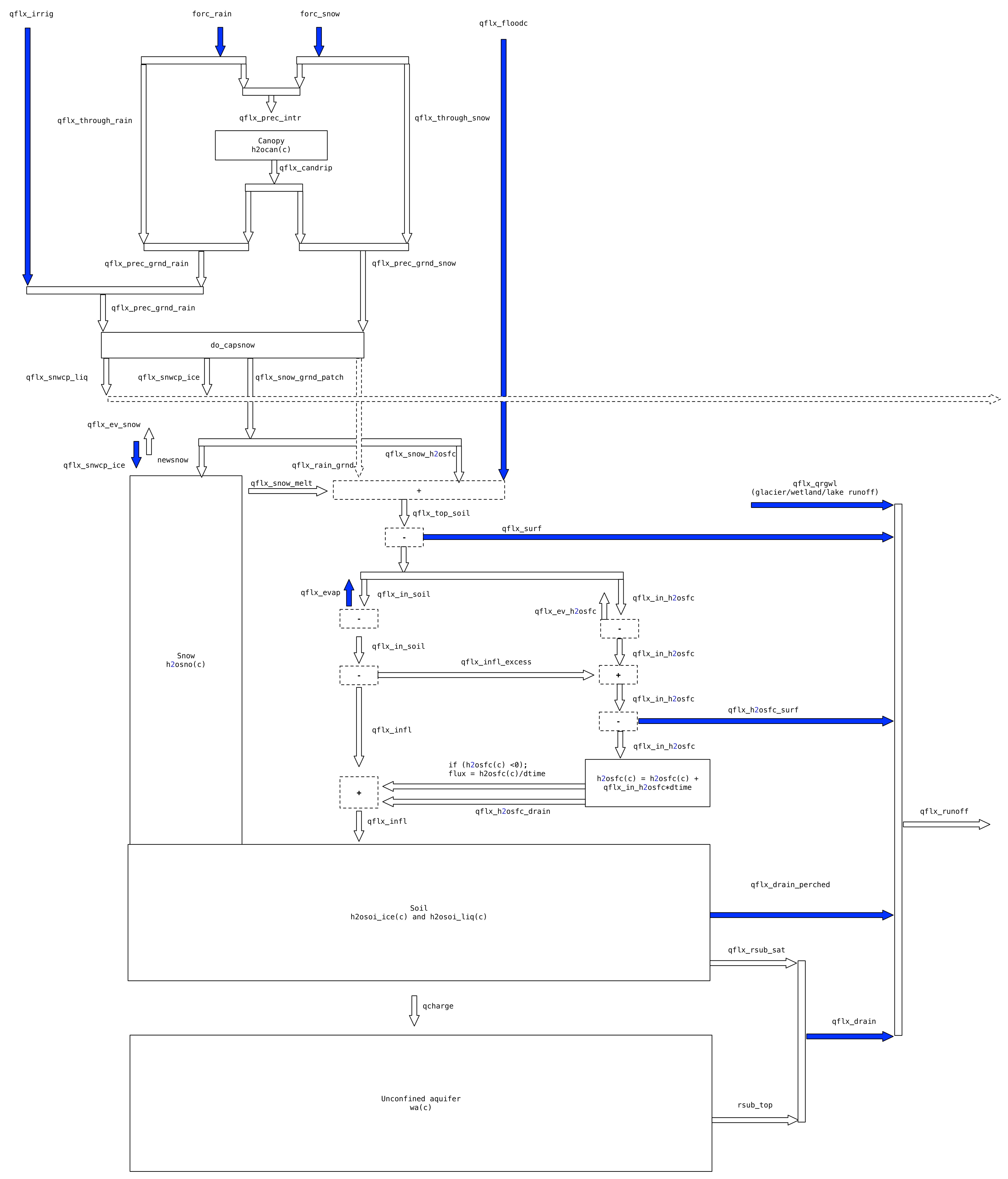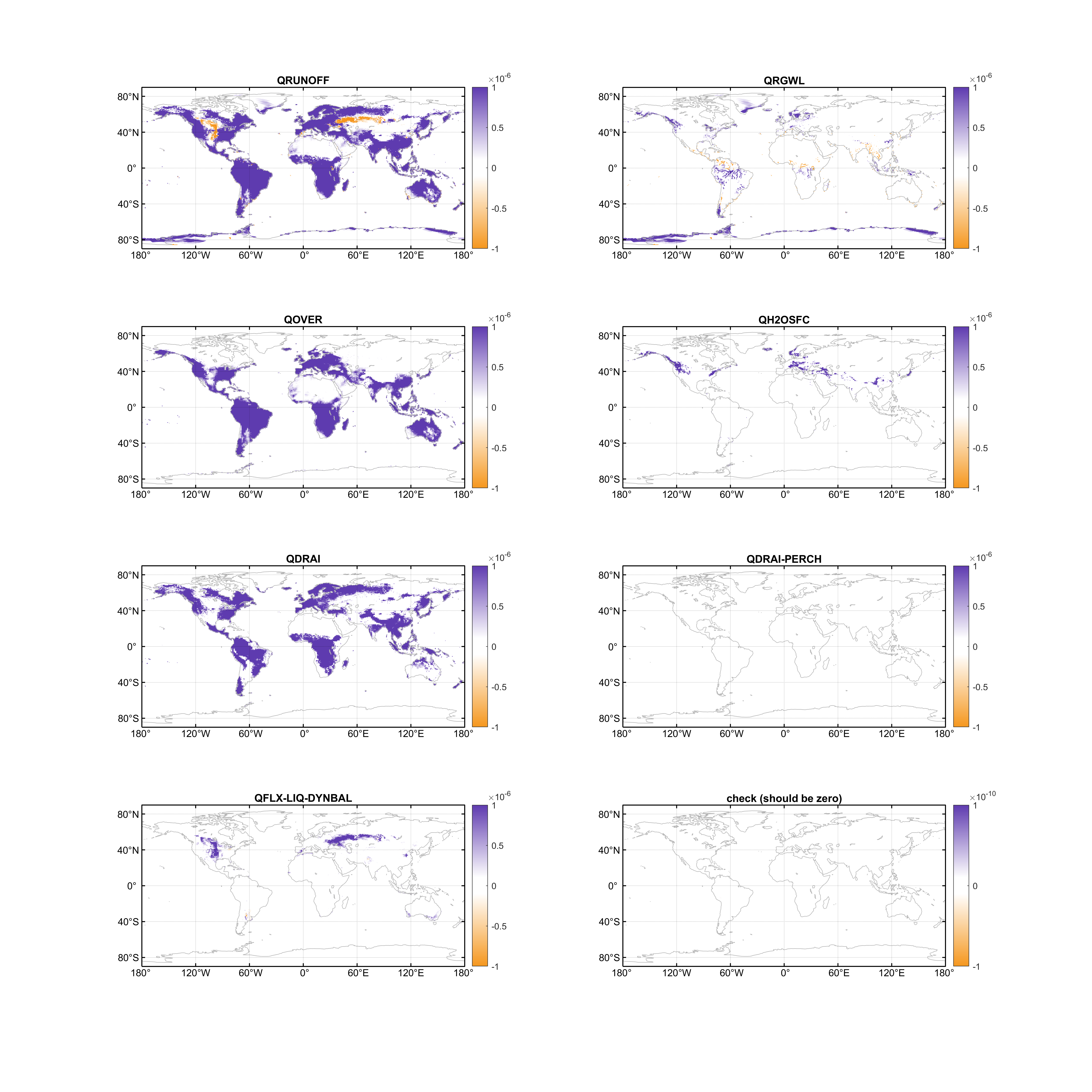There are many variables related to runoff generated in ELM/CLM. These fluxes are then passed to MOSART with different names, need to be very clear what do they mean.
The hydrologic processes for CLM 4.5 are clearly represented in below diagram. I got it from Gautam but don’t know if he made it. (more here for CLM 5).

Basically, the runoff generated by ELM has three parts in a simulation with fixed landuse: 1) surface runoff, 2) subsurface runoff, and 3) glacier, wetland, and lakes (GWL) for water balance.
1) Surface runoff is qflx_surf + qflx_h2osfc_surf at column level or qflx_rofliq_qsur_grc + qflx_rofliq_qsurp_grc at grid level. The first term is called “surface runoff”, which is excess water from soil saturation (QOVER in ELM output); the second term is called surface water runoff, which is the outflow from surface water storage such as pond (QH2OSFC in ELM output). It is very confusing by looking at the two names in the output.
2) Subsurface runoff is qflx_drain + qflx_qflx_drain_perched at column level or qflx_rofliq_qsub_grc + qflx_rofliq_qsubp_grc at grid level. The first term is called “sub-surface drainage” (QDRAI in ELM output); the second term is called “perched wt drainage” (QDRAI_PERCH in ELM output). These two terms are pretty straightforward.
3) GWL runoff (QRGWL in ELM output) is the glacier, wetland and lakes water balance residual component which is not routed in MOSART
The sum of the three terms is QRUNOFF in ELM output file. These three terms are passed to MOSART for routing and named QSUR_LIQ, QSUB_LIQ, and QGWL_LIQ in MOSART’s output file. The fluxes that enters MOSART channels for routing in E3SM V1 are the sum of QSUR_LIQ and QSUB_LIQ where QSUR_LIQ = ELM-QOVER+ELM-QH2OSFC; QSUB_LIQ = ELM-QDRAI+ELM-QDRAI_PERCH.
If the ELM simulation is a transient run (i.e. the landuse fraction updates every year), then there will be an additional term QFLX_LIQ_DYNBAL (liq dynamic land cover change conversion runoff flux) that ensures the water mass conservation when landuse change happens. More details can be found here. Note that this term could introduce negative runoff as well. In this case, QRUNOFF = QOVER + QH2OSFC + QDRAI + QDRAI_PERCH + QRGWL - QFLX_LIQ_DYNBAL.
Below is a plot that breaks all the runoff components of a random January in a transient run.

some other highlights/comments
- In default, irrigation is added directly on the ground, bypassing the canopy.
- There’s a elevation standard deviation term (STD_ELEV) in ELM surface data to describe the microtopology in the grid, which is used to dynamically calculate the fraction of surface water storage (FH2OSFC) over the grid.
- CLM 4.5 history field names can be found here.
- In current hydrology scheme, there’s a pre-defined term
qflx_floodtaking flood flux from the river model (RTM) and re-applied it on top of the soil, this can be re-activated when coupling ELM and MOSART in terms of flood inundation. Not sure if we can directly add inundated water intoH2OSFChere.

Loading comments...